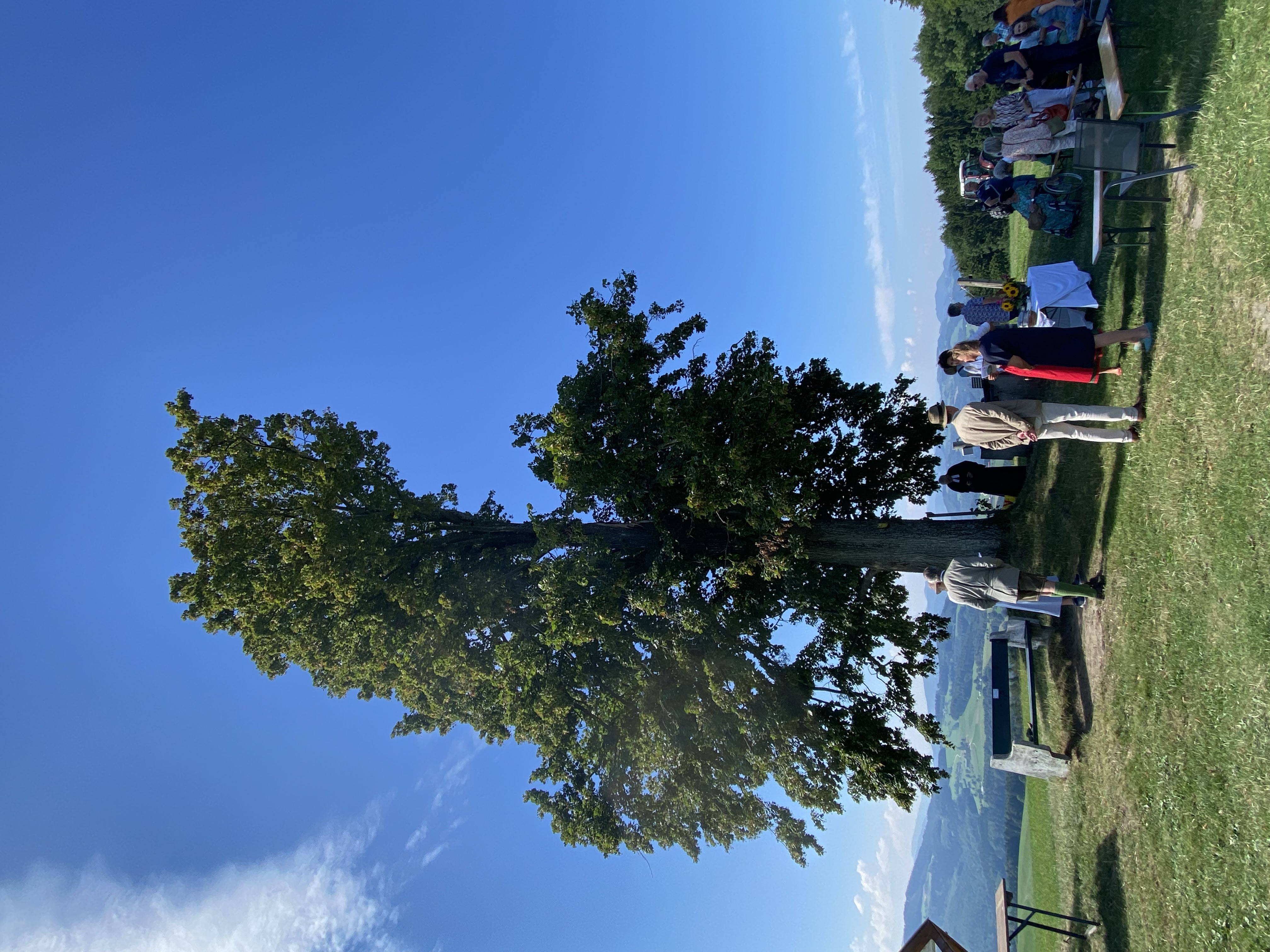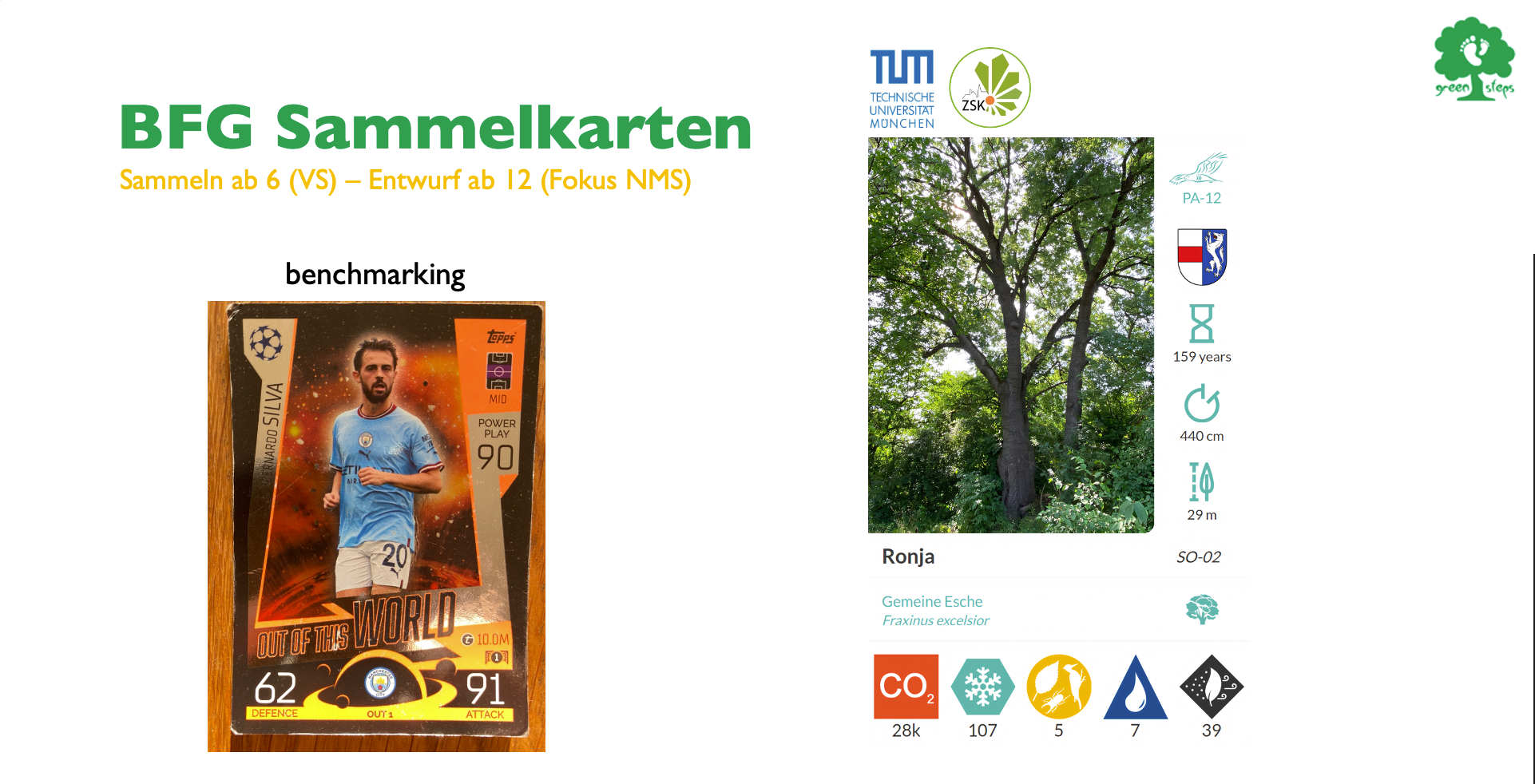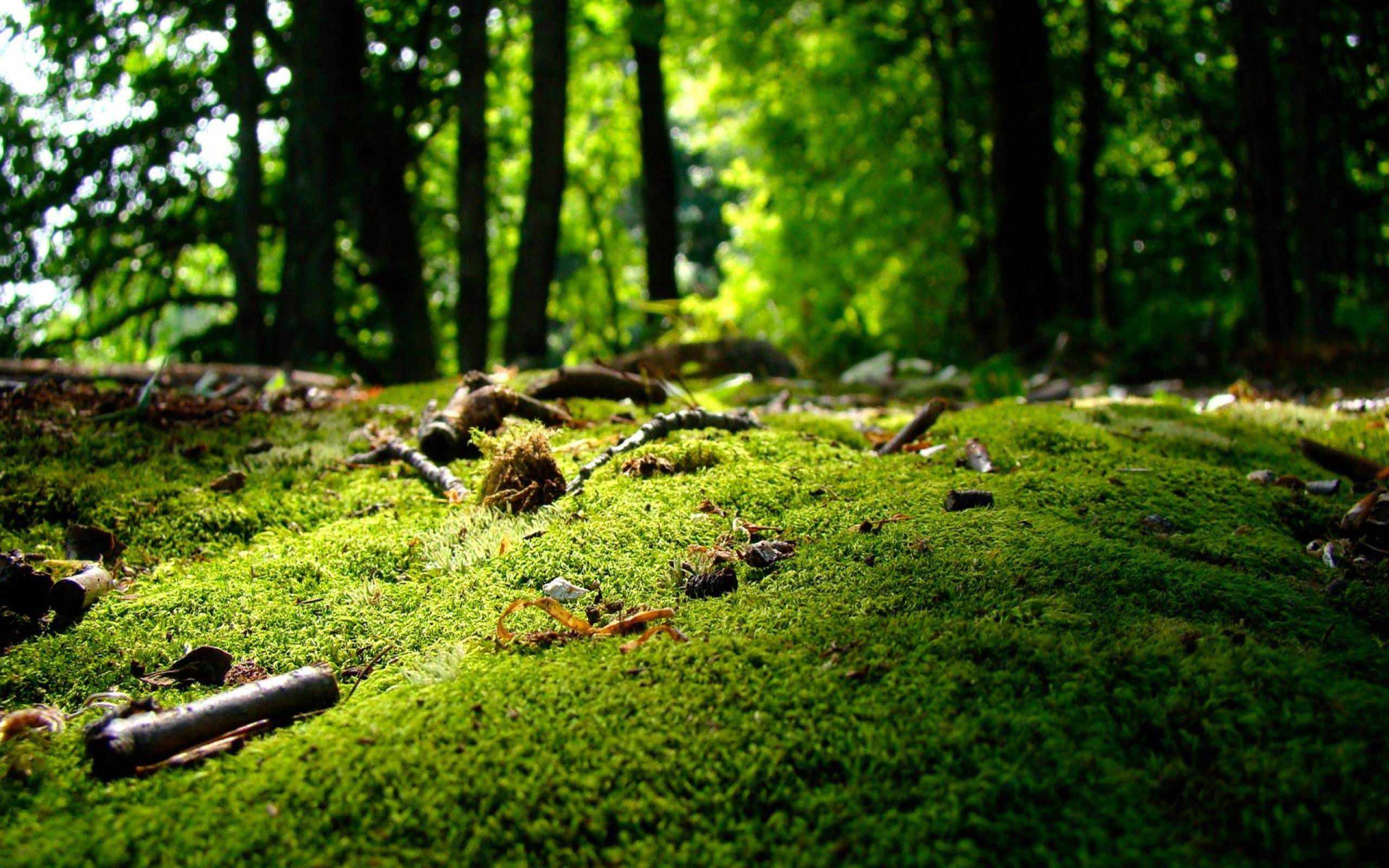Author:
Green Steps
Short summary:
Once upon a time, there were some impressive giant trees on the Rudolfshöhe in Wilhelmsburg. Now the last large-leaved lime tree is going to be cut down. According to the Kendel-Groiss family, on whose land the tree stands, the district administration of St. Pölten-Land is using tree liability as a means of exerting pressure. Is it allowed to do so?

A mountain service in front of a natural monument is something extraordinary. "God's creation makes man humble". With these words Pastor Herbert Graeser introduces the celebration. About 50 people have gathered in front of the large-leaved lime tree on the Rudolfshöhe. The sun is shining brightly. There is almost no wind. Despite the shade provided by the huge tree, it is hot.
Directly behind the altar, the trunk is emblazoned with a yellow sign that marks the large-leaved lime as a natural monument. In February of this year, I measured and mapped the tree. It has a trunk circumference of 330 cm and is probably over 200 years old. Its exposed position made me sense its vulnerability already on my first hike to the Ochsenburger Hütte three years ago. Today I realise, somewhat belatedly, that a third of the crown is missing.
A closer observation shows that the main branch has broken off at a height of about 10m, taking several smaller branches with it. After the end of the service, I asked the old birder Kendel-Groiss, who was present, when this had happened. She does not know exactly but tells me that the district administration is putting pressure on the family to remove the tree completely, as it is in critical health.

I remember our conversation with the owner of the lime tree at the foot of the Ochsenburg, which was cut down last year because of a road widening. Obviously, the authorities always use the same rhetoric when dealing with tree owners: if something happens, you are to blame and liable. You scare the tree owner with the law.
The problem surrounding the issue of tree liability is not a new one. Strict liability regulations lead to trees being cut back or felled at an early stage without any weighty reason in order to escape the potential consequences of the unpredictable liability regime as a tree owner
HOW DID SUCH AN UNSATISFACTORY SITUATION REGARDING TREE LIABILITY ISSUES COME ABOUT IN THE FIRST PLACE?
By law, there is no explicit regulation on liability for falling trees or torn branches in cases of damage outside the forest. Therefore, the general principles of tort law according to §§ 1293 ff ABGB apply. Depending on the occasion, according to established case law, § 1319 ABGB (liability for buildings) is to be examined by analogy in the case of damage caused by trees.
What is needed in concrete terms?
An implementation of special liability provisions for trees was proposed by:
The addition to § 1319 ABGB: "The tree is not a work within the meaning of this provision." This excludes an analogous application of § 1319 ABGB.
The new introduction of § 1319b ABGB: Such a statutory order would put tree liability on a completely new legal footing and limit the traffic safety obligations for trees to a realistic and reasonable level.
IS A CHANGE IN THE LAW SUFFICIENT?
If one follows a service in the lap of nature and there is a natural monument directly behind the altar, it is obvious to assume that the tree is more than just a plant. It stands there in representation of the sculptures common in Catholic churches, which show a crucified Son of God, as a living being who sacrifices himself for humanity and makes its survival possible.
I recall my research into the relationship between trees and early Christianity. While trees were often sacred to the primitive peoples of Europe, the task of Pope Gregory in the eighth century AD was to convert the Germanic peoples from their pagan tree worship. Thus, the Dona oak fell by the axe of Bishop Boniface in 723 and hundreds of other tree cult sites of the Germanic peoples were destroyed by the Church until the late Middle Ages.
The religious practice of the last two millennia has been transformed to a good extent in space. Whereas before the spread of Christianity, pantheistic and polytheistic festivals were celebrated in nature, since the Middle Ages at least, believers have found themselves in churches that are clearly separated from nature. The separation between nature and man, between body and spirit, has manifested itself strongly, especially in Christianity.

Modern ecology, however, shows us that we are only a part of creation and that this super-organism represents a highly complex symbiosis of the most diverse forms of life. In this respect, Semitic religions, that focus strongly on the connection between God and humans, are in need of overhaul. Science can contribute by communicating ecosystem services in an understandable way.
If the believer (like the pagan) understands that humans are a species dependent on trees, measures to protect them become a logical outcome, which must nevertheless be placed on a legal foundation through laws. Trees are not a thing to which one enjoys exclusive ownership, but a common good that must be preserved on behalf of future generations.

COMMUNICATION OF ECOSYSTEM SERVICES
Green Steps cooperates with the Centre for Urban Nature and Climate Adaptation at the Technical University of Munich and i-Tree, an American tree management software, to present the ecosystem services of trees in an appealing way and combines this science communication in a game. The Big Friendly Giants game is about finding the oldest trees in a region and becoming a BFG Guardian. More than 300 such trees are waiting to be discovered in St. Pölten.
The modular system allows each municipality to replicate this game itself by mapping trees and linking them to routes. Every hundred-year-old tree is a unique specimen worth protecting, a mothership of regional biodiversity, as the German star forester Peter Wohlleben wrote in his book "The Secret Life of Trees". Every old tree cools the surrounding air, provides shade, absorbs rainwater, and intercepts dust particles.
These superpowers are depicted in our web app and on printed trading cards to understand the vital importance of trees in a playful way.

Read more:
• Tree mapping on the Green Steps ARK with ecosystem services
• Natural monument declaration from 1955
• Monumental large-leaved lime cut down in Ochsenburg
• OÖ Umweltanwaltschaft: Baumhaftung – Es ist Zeit für eine Gesetzesänderung
• Against the heat: Leave the old trees standing!
• Peter Wohlleben: The secret life of trees





